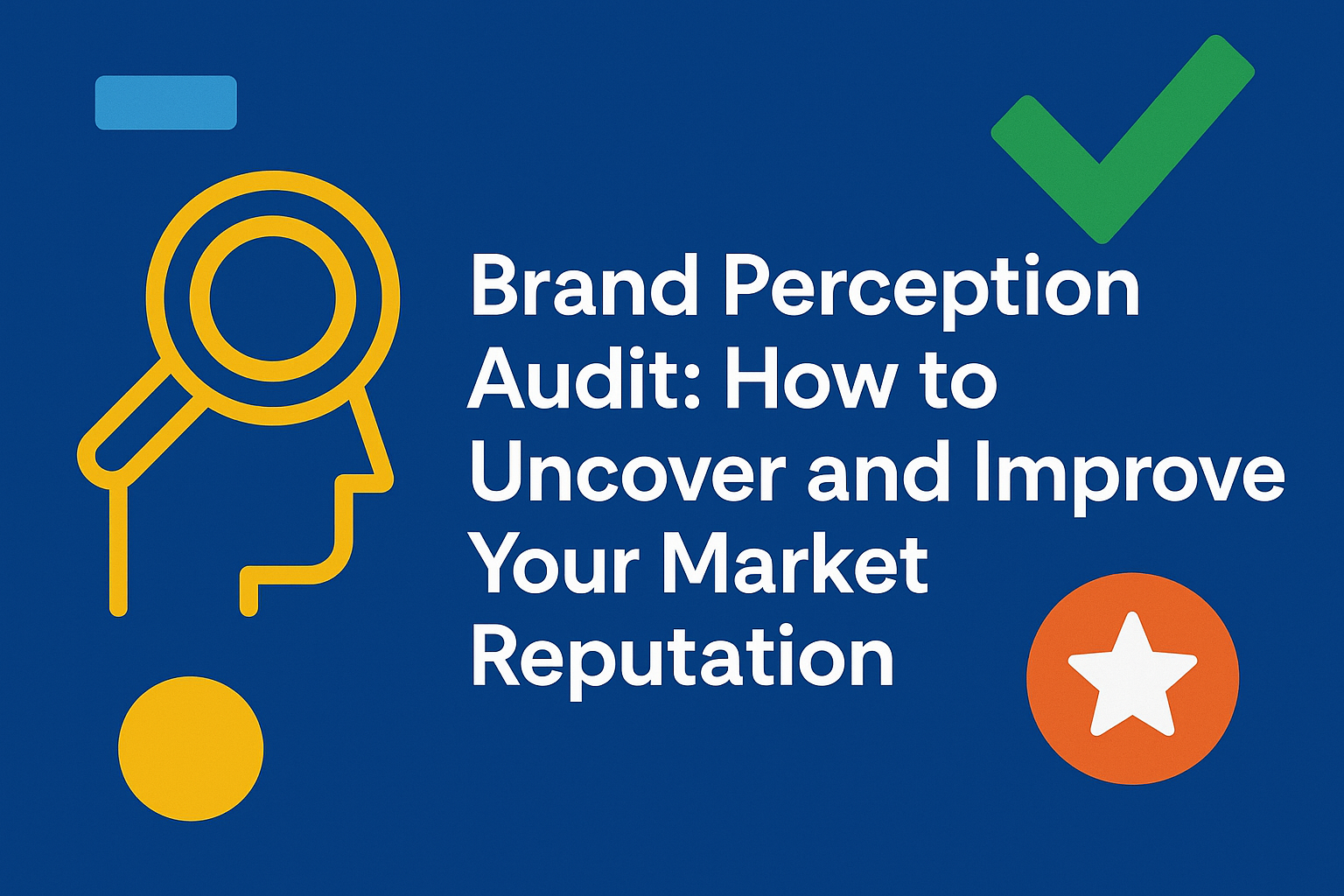By Jo Medico
In business, perception shapes reality. Your marketing might be polished, your services exceptional, and your team dedicated — but if the market’s perception of your brand doesn’t align with those facts, your growth will suffer. That’s where a Brand Perception Audit comes in.
This process gives you a clear, data-backed understanding of how your brand is truly viewed by prospects, customers, and competitors. With these insights, you can close the gap between how you want to be seen and how you’re actually perceived.
Why a Brand Perception Audit Is Essential
A strong reputation doesn’t just attract leads — it lowers acquisition costs, increases trust, and speeds up sales cycles. But assumptions can be dangerous. You might think your brand stands for reliability, but the market may see you as expensive, outdated, or just another option in a crowded field.
A Brand Perception Audit helps you:
- Identify mismatches between your intended brand image and actual perception
- Understand what drives customer trust and loyalty
- Spot negative associations before they damage your reputation
- Uncover messaging gaps that weaken your marketing ROI
Step 1: Gather Direct Customer Feedback
Start by going straight to the source. Send surveys or conduct interviews with your existing clients, asking:
- What three words would you use to describe our brand?
- How did you first hear about us?
- Why did you choose us over competitors?
- What could we improve?
Their answers will reveal the emotional and practical drivers behind their perception — often with surprising insights.
Step 2: Monitor Online Mentions and Reviews
Public feedback is one of the most visible indicators of brand perception. Analyze reviews, social media mentions, and industry forums for recurring themes. Look for patterns in both praise and criticism, then track changes over time to see if your reputation is improving or declining.
Step 3: Compare Against Competitors
A Brand Perception Audit isn’t complete without benchmarking against the competition. Research how your rivals position themselves, the language they use, and how their customers talk about them. This will help you identify opportunities to stand out or reposition your brand.
Step 4: Align Your Marketing Strategy With Insights
Once you understand how the market sees you, align your marketing and sales strategies accordingly. For example:
- If customers value your speed of service, emphasize that in ad copy and landing pages.
- If you’re seen as premium, ensure your messaging communicates the value behind the price.
- If a gap exists between perception and reality, use campaigns to shift the narrative.
Step 5: Make It an Ongoing Practice
Perception shifts over time — especially in competitive markets. Schedule a Brand Perception Audit annually or biannually to ensure you’re staying ahead of trends and addressing potential issues before they become costly problems.
Final Thought
In today’s digital-first marketplace, what people believe about your brand often matters as much as the reality. By conducting a thorough Brand Perception Audit, you gain the clarity needed to strengthen trust, sharpen positioning, and fuel sustainable growth.
Ready to refine how the market sees you and turn perception into profit?
At DoubleDome Digital Marketing, we help B2B service companies uncover critical insights, craft winning strategies, and build reputations that convert into measurable growth. Book Your Digital Marketing Strategy Call Today.









